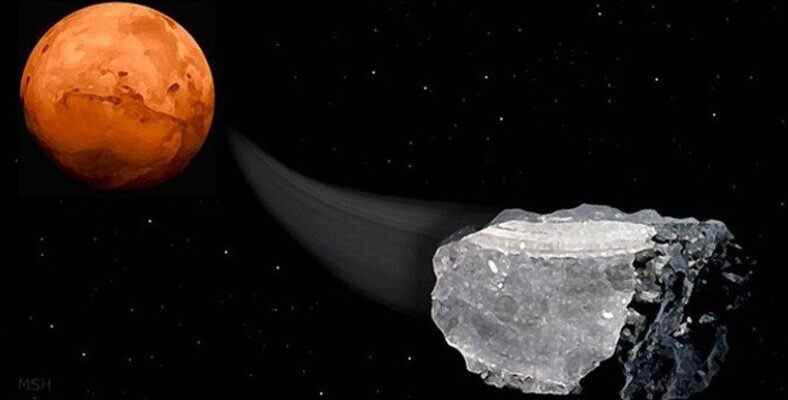Scientists examining a meteorite found in the Sahara Desert in 2011 detected new information about life on Mars after examining the zircon found in the meteorite. Studies have shown that a major collision took place on Mars.
Whether there is life on the surface of Mars is still a matter of debate. Astronomers continue to make new discoveries about Mars every day. Recently, a study was published in which we obtained information about the past of Mars. With the published research, traces of water on the surface of Mars were examined.
Research on Mars continues not only on its surface, but also on Earth. Finally, the crater lake inside the Poas volcano in Costa Rica was included in Mars surveys. At the same time, meteorites falling to Earth provide us with information from other planets on many subjects.
A meteor from Mars offers key information about life on the planet
Australian scientists in 2011 in the Sahara desert found weighing 320 grams He shared the findings of the NWA 7034 meteorite. ‘Black beauty’ also called and is 2.1 billion years old It has been announced that the meteorite detected is a stone consisting of broken rock and many minerals, mostly basalt, which solidifies over time and becomes a rock.
Also inside the meteor is very old and small. zircon particles researchers who discovered that this due to a major collision thinks it has. The zircon in the meteor is evidence of events that took place on the surface of Mars 4 billion years ago.
RELATED NEWS
NASA’s Mars rover ‘Asleep’ due to Massive Dust Storm Out of Safe Mode: First Information From Mars After Storm
The researchers say that major collisions can destroy living conditions as well as create new living conditions. Discovered zircon grains on Mars habitability change in timeline thought to be created. According to the data obtained from the studies, a situation like the extinction of the dinosaurs as a result of the asteroid hitting the Earth may have occurred on Mars billions of years ago.
According to the statements made by the research team, the data obtained are on the Red Planet. ‘habitable range’ indicates that it may be later than previously thought. With the effect of these collisions, which are thought to have taken place approximately 4.2 billion years ago, the mentioned habitable gap may have been 3.7 billion – 3.9 billion years ago; It is also stated that this corresponds to the time period when liquid water is thought to exist on the planet’s surface.
